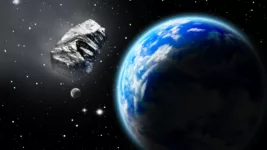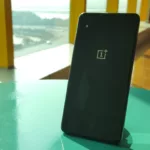NASA scientists have discovered a tiny asteroid in an orbit around the Sun that keeps it a constant companion of Earth, that will remain so for centuries to come.
As it orbits the sun, this new asteroid named “2016 HO3” appears to circle around the Earth as well. It is too distant to be considered a true satellite of our planet, but it is the best and most stable example to date of a near-Earth companion, or “quasi-satellite”.
Paul Chodas, Manager of NASA’s Centre for Near-Earth Object (NEO) Studies, California.
Since ‘2016 HO3’ loops around our planet but never ventures very far away as we both go around the Sun, we refer to it as a quasi-satellite of Earth.
The size of this object has not yet been firmly established but it is likely larger than 120 ft and smaller than 300 ft.
Another asteroid named “2003 YN107” followed a similar orbital pattern for a while over 10 years ago, but it has since departed the vicinity.
In its yearly trek around the sun, asteroid ‘2016 HO3’ spends about half of the time closer to the Sun than Earth, passing ahead of our planet, and about half of the time it orbits farther away, causing it to fall behind.
Its orbit is also tilted a little, causing it to go up and then down once each year through Earth’s orbital plane.
In effect, this small asteroid is caught in a game of leap frog with Earth that will last for hundreds of years.
Paul Chodas
The asteroid’s loops around Earth drift a little ahead or behind from year to year, but when they drift too far forward or backward, Earth’s gravity is just strong enough to reverse the drift and hold onto the asteroid so that it never wanders farther away than about 100 times the distance of the moon.
Asteroid “2016 HO3” was first spotted on 27 April by the Pan-STARRS 1 asteroid survey telescope on Haleakala, Hawaii, operated by the University of Hawaii’s Institute for Astronomy and funded by NASA’s Planetary Defence Coordination Office.








